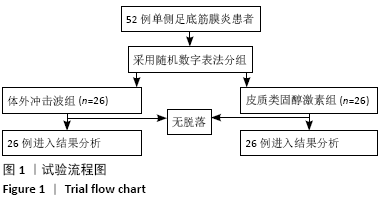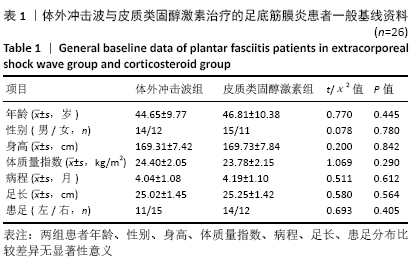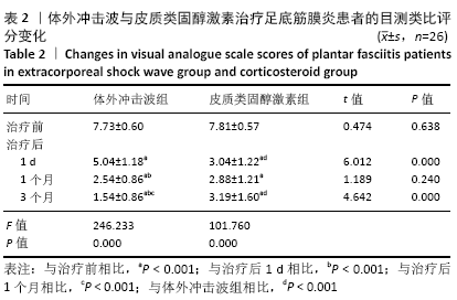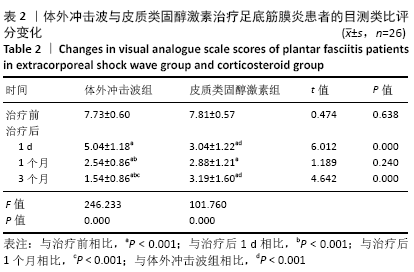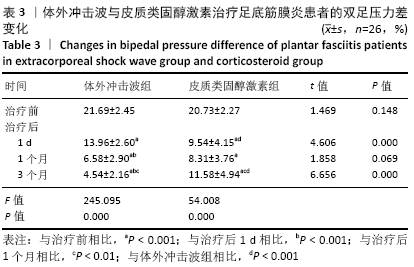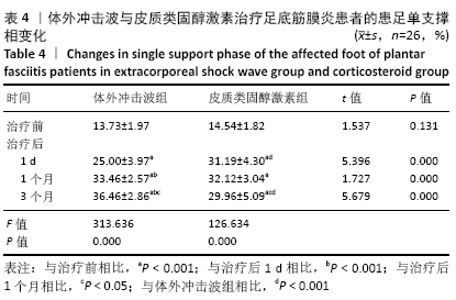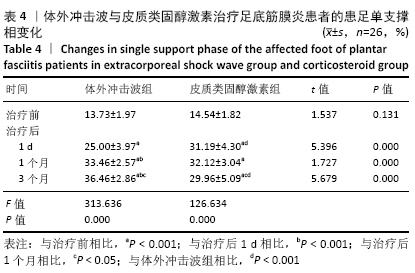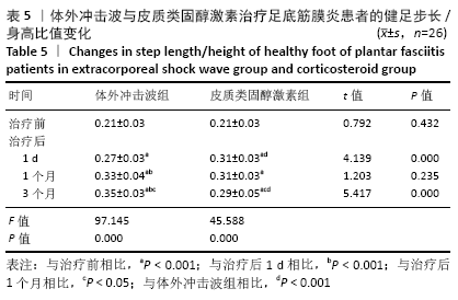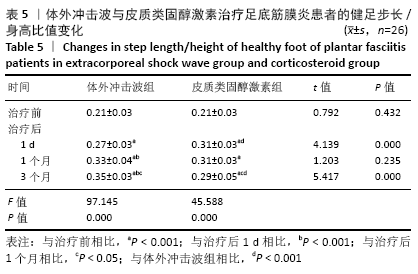[1] 张鹏,俞光荣.足底跖腱膜炎的研究现状[J].中国矫形外科杂志, 2013,21(23):2375-2378.
[2] 李志云,倪喆,邵增务.足底筋膜炎治疗的进展[J].中华物理医学与康复杂志,2012,34(9):702-704.
[3] OWENS JM. Diagnosis and Management of Plantar Fasciitis in Primary Care. J Nurse Pract . 2017;13(5):354-359.
[4] CHEN CM, LEE M, LIN CH, et al. Comparative efficacy of corticosteroid injection and non-invasive treatments for plantar fasciitis: a systematic review and meta-analysis. Sci Rep. 2018;8(1):4033.
[5] AL-BOLOUSHI Z, LÓPEZ-ROYO MP, ARIAN M, et al. Minimally invasive non-surgical management of plantar fasciitis: A systematic review. J Bodyw Mov Ther. 2019;23(1):122-137.
[6] XU D, JIANG W, HUANG D, et al. Comparison Between Extracorporeal Shock Wave Therapy and Local Corticosteroid Injection for Plantar Fasciitis. Foot Ankle Int. 2020;41(2):200-205.
[7] MARDANI-KIVI M, KARIMI MOBARAKEH M, HASSANZADEH Z, et al. Treatment Outcomes of Corticosteroid Injection and Extracorporeal Shock Wave Therapy as Two Primary Therapeutic Methods for Acute Plantar Fasciitis: A Prospective Randomized Clinical Trial. J Foot Ankle Surg. 2015;54(6):1047-1052.
[8] TAŞ S, ÇETIN A. An investigation of the relationship between plantar pressure distribution and the morphologic and mechanic properties of the intrinsic foot muscles and plantar fascia. Gait Posture. 2019;72: 217-221.
[9] 周增华,蒋宗滨,张爱民,等.不同次数冲击波治疗对跟痛症的临床疗效研究[J].中国康复医学杂志,2017,32(2):226-228.
[10] 程浩,陆伟萍,高献忠,等.超声引导下富血小板血浆注射治疗足底筋膜炎的疗效观察[J].临床麻醉学杂志,2018,34(11):1072-1075.
[11] 袁睆,肖水源.疼痛评估工具的临床应用[J].中国心理卫生杂志, 2013,27(5):331-334.
[12] 姬树青,马信龙,马剑雄,等.短期激素局部注射治疗肌腱病的可行性研究[J].实用骨科杂志,2010,16(4):273-277.
[13] WHITTAKER GA, MUNTEANU SE, MENZ HB, et al. Corticosteroid injection for plantar heel pain: a systematic review and meta-analysis. BMC Musculoskelet Disord. 2019;20(1):378.
[14] 贺凡丁,卢漫,成雪晴,等.超声引导下介入治疗跖筋膜炎的临床价值[J].中华医学超声杂志(电子版),2015,12(1):35-38.
[15] 张隆浩,满立波,黄广林,等.放散状与聚焦状冲击波治疗足底筋膜炎疗效比较[J].中国运动医学杂志,2012,31(6):523-525,532.
[16] ESLAMIAN F, SHAKOURI SK, JAHANJOO F, et al. Extra Corporeal Shock Wave Therapy Versus Local Corticosteroid Injection in the Treatment of Chronic Plantar Fasciitis, a Single Blinded Randomized Clinical Trial. Pain Med. 2016;17(9):1722-1731.
[17] GRADY J, BOUMENDJEL Y, LAVIOLETTE K, et al. Extracorporeal Pulse-Activated Therapy versus Injection: Treatment of Recalcitrant Plantar Fasciitis. J Am Podiatr Med Assoc. 2019;109(2):108-112.
[18] LAI TW, MA HL, LEE MS, et al. Ultrasonography and clinical outcome comparison of extracorporeal shock wave therapy and corticosteroid injections for chronic plantar fasciitis: A randomized controlled trial. J Musculoskelet Neuronal Interact. 2018;18(1):47-54.
[19] ERMUTLU C, AKSAKAL M, GÜMÜŞTAŞ A, et al. Thickness of plantar fascia is not predictive of functional outcome in plantar fasciitis treatment. Acta Orthop Traumatol Turc. 2018;52(6):442-446.
[20] XIONG Y, WU Q, MI B, et al. Comparison of efficacy of shock-wave therapy versus corticosteroids in plantar fasciitis: a meta-analysis of randomized controlled trials. Arch Orthop Trauma Surg. 2019;139(4):529-536.
[21] LI S, WANG K, SUN H, et al. Clinical effects of extracorporeal shock-wave therapy and ultrasound-guided local corticosteroid injections for plantar fasciitis in adults: A meta-analysis of randomized controlled trials. Medicine (Baltimore). 2018;97(50):e13687.
[22] 梁成军.足底压力测量在步态分析及病理足评估中的应用[J].中国组织工程研究与临床康复,2007,11(40):8149-8152.
[23] 牛森,霍洪峰,赵焕彬.新兵足底筋膜炎患者足底压力分布与步态特征[J].中国运动医学杂志,2019,38(4):257-262.
[24] PARK C, LEE S, KIM S, et al. The effects of the application of low-dye taping on paretic side plantar pressure among patients with plantar fasciitis. J Phys Ther Sci. 2015;27(11):3555-3557.
[25] BRAUN BJ, HUSS C, HEIMUELLER S, et al. Should I Stay or Should I Go? A Prospective, Blinded Study Comparing the Diagnostic Capability of Dynamic and Stationary Pedobarography in Plantar Fasciitis. J Foot Ankle Surg. 2018;57(6):1181-1185.
[26] 励建安,孟殿怀.步态分析的临床应用[J].中华物理医学与康复杂志,2006,28(7):500-503.
[27] 胡雪艳,恽晓平,郭忠武,等.正常成人步态特征研究[J].中国康复理论与实践,2006,12(10):855-857,封3.
|

